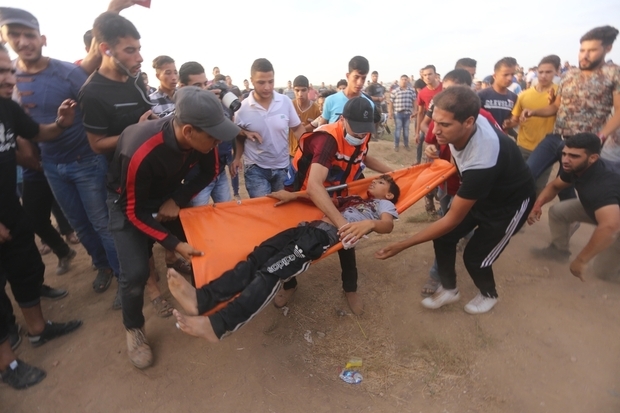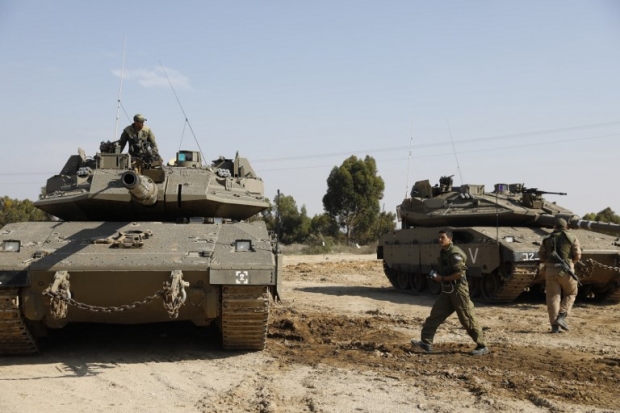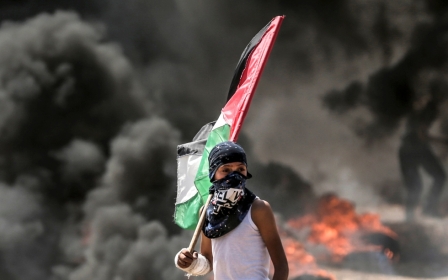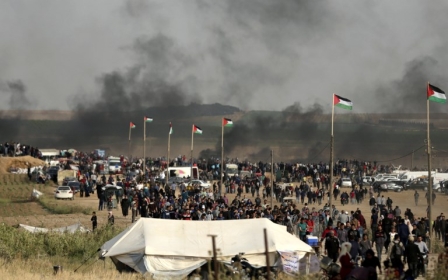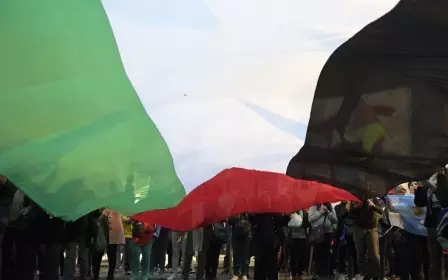How NYT got it wrong about Razzan al-Najjar and the Great March of Return

Palestinians in Gaza were delighted to read the recent investigative report in The New York Times about the killing of paramedic Razan al-Najjar, who was killed on 1 June by an Israeli sniper.
It came as good news to us because international media have kept the human tragedy caused by the occupation and the Israeli-imposed siege on Gaza off its agenda, focusing on other regional issues. It seems the only way to draw attention to our suffering is through deaths and casualties.
How can we believe that the targeting was unintentional, when we are talking about a sniper who is highly skilled at shooting from long distances?
We were thrilled by the work of journalist David Halbfinger and his colleagues in their endeavours to obtain valuable information on this serious incident. But after reading the investigation more than once with an objective eye, there are some points that need to be challenged.
Illegal and inhumane siege
First, the article sheds light on the personal aspects of Najjar and her childhood, while largely obscuring the tragic living circumstances of the residents of Gaza due to the illegal and inhumane siege imposed by Israel for more than a decade.
The siege has destroyed all aspects of daily life for two million Palestinians, diminishing their hopes of a better future.
These tragic circumstances spurred thousands of young men and women to participate in the Great March of Return, peacefully raising their voices to demand an immediate and unconditional lifting of the siege.
The article focuses on the personal dimensions of Najjar’s life, which many Palestinians believe should be protected.
The video accompanying the text as well as the author's general description give the impression that Najjar - allegedly suffering from psychological and social problems, and characterised by frivolity and impulsiveness - was motivated by her desire to reject the values of her community, rather than her aspiration to create a better future for herself and the young people of Gaza.
Second, the Gaza Strip, with a total area of 365 square kilometres and a population of more than two million Palestinians - most of whom are refugees - is one of the most densely populated and impoverished areas in the world. The siege was imposed unfairly in response to the results of democratic and fair elections held in 2006, won by Hamas - a point that is not made clear in the article.
The article reduces this struggle in a disgraceful manner, suggesting that Hamas propaganda pushed people to attend the demonstration
The blockade has affected all aspects of life in Gaza: water is contaminated, electricity is cut off, medicine is unavailable, travel is forbidden or impossible, poverty is rampant and unemployment among young people is about 70 percent. The UN has said Gaza could be uninhabitable by 2020.
Against this backdrop, thousands of Palestinian men, women and children from different political factions and social strata have participated in the Great March of Return each Friday, despite the dangers inherent in this peaceful protest. They participate to assert that they will not accept a silent death.
The article, however, reduces this struggle in a disgraceful manner, suggesting that Hamas propaganda pushed people to attend the demonstrations. Hamas does not deny its active participation in organising these marches, but everyone in Gaza knows that it is a mass popular action, involving all factions and representing all Palestinians.
Justifying the Israeli narrative
Thirdly, while the Times article lays out a beautiful analysis of the events of Najjar’s death by the hour and minute, it unfortunately adopts or justifies the Israeli narrative in more than one part. At the same time, the piece accuses Palestinians of embellishing the truth.
The article alleges that a single bullet hit the ground and fragmented, with the pieces hitting three paramedics, killing Najjar. Yet, how can we believe that the targeting was unintentional, when we are talking about a sniper who is highly skilled at shooting from long distances?
Dozens of videos and live testimonies have shown Palestinian demonstrators - including children, women, journalists and paramedics - directly being shot, even though they were hundreds of metres from Gaza’s separation fence and posed no threat to Israeli soldiers.
The Israeli army has advanced techniques that enable it to closely observe anyone in the field. I have seen, first-hand, Israeli soldiers calling young people by their names remotely via megaphones, relying on a data bank associated with the civil registry of the Palestinian population.
Certain assertions in the article are not backed up by specific evidence. In one section, the piece asserts that a young man used Najjar “as cover” while hurling a rock at Israeli soldiers. Where did this information come from?
In another section, the article suggests that “as support for Hamas was cratering”, the group “jumped at the chance to redirect popular anger against Israel” - but no evidence is presented to show that support for Hamas in Gaza had declined.
‘Insolvable cycle of violence’
Finally, the article attempts to highlight how both sides of the Israeli-Palestinian conflict are “locked into a seemingly unending and insolvable cycle of violence”. It is unacceptable to suggest that both sides are equal, victim and aggressor. According to international law, Israel is an occupying state and Palestinians are a people under occupation. They have the right to defend themselves and to resist the occupation by all means available.
The article states that the economic situation deteriorated in Gaza “after three wars with Israel”. But the fact is, Israel launched three devastating aggressions on the besieged territory. Gaza did not initiate the conflicts.
It makes us happy when events in Gaza are covered by major newspapers such as The New York Times, but what we hope for is objective and professional coverage that respects facts on the ground and does not adopt prejudices.
Najjar’s killing was a fully fledged crime, and those who committed it must be held accountable. Those who participated in the killing of more than 250 Palestinians and the wounding of more than 20,000 must also be prosecuted.
These popular and peaceful marches will continue until the unjust and illegal siege is lifted, two million Palestinians are saved from a slow death, and future generations are given a chance to live with stability and prosperity.
- Basem Naim is a former Palestinian health minister.
The views expressed in this article belong to the author and do not necessarily reflect the editorial policy of Middle East Eye.
Photo: Paramedic Razan al-Najjar tends to an injured colleague at the Gaza-Israel fence on 15 May (AFP)
Middle East Eye propose une couverture et une analyse indépendantes et incomparables du Moyen-Orient, de l’Afrique du Nord et d’autres régions du monde. Pour en savoir plus sur la reprise de ce contenu et les frais qui s’appliquent, veuillez remplir ce formulaire [en anglais]. Pour en savoir plus sur MEE, cliquez ici [en anglais].



